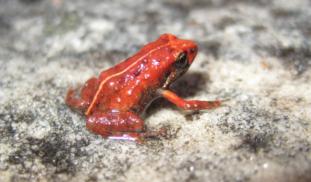Please wait...
About This Project
Tiny, cryptic moss frogs inhabit remote mountain seepages in South Africa's fiery fynbos biome. Non-native, invasive pine trees threaten this biodiversity hotspot, but restoration efforts are underway. In this project we will compare methods and outcomes of mountain fynbos restoration projects to answer the question: How do invasive pine removal strategies affect moss frog populations and effectively restore fynbos?
More Lab Notes From This Project

Browse Other Projects on Experiment
Related Projects
Using eDNA to examine protected California species in streams at Hastings Reserve
Hastings Reserve is home to three streams that provide critical habitat for sensitive native species. Through...
City smart: Are cities making birds smarter?
One cannot go to Florida and miss the White Ibises roaming golf, park and private lawns. But how does a...
How do polar bears stay healthy on the world's worst diet?
Polar bears survive almost entirely on seal fat. Yet unlike humans who eat high-fat diets, polar bears never...




